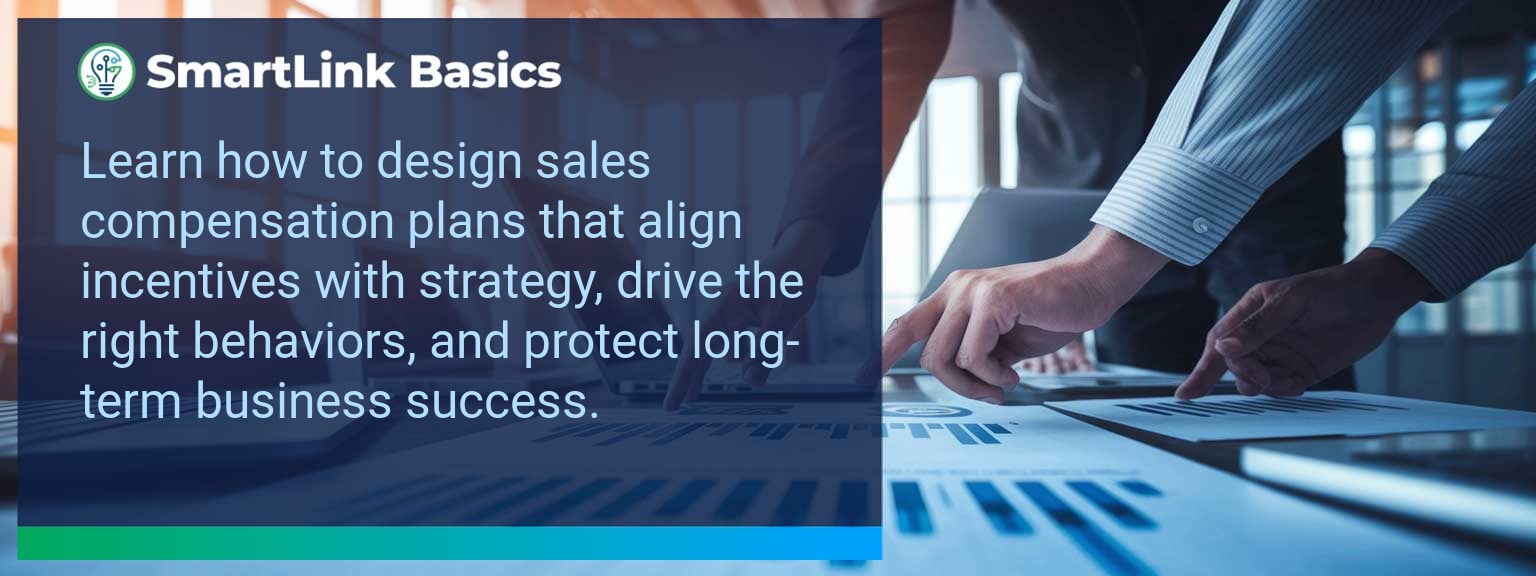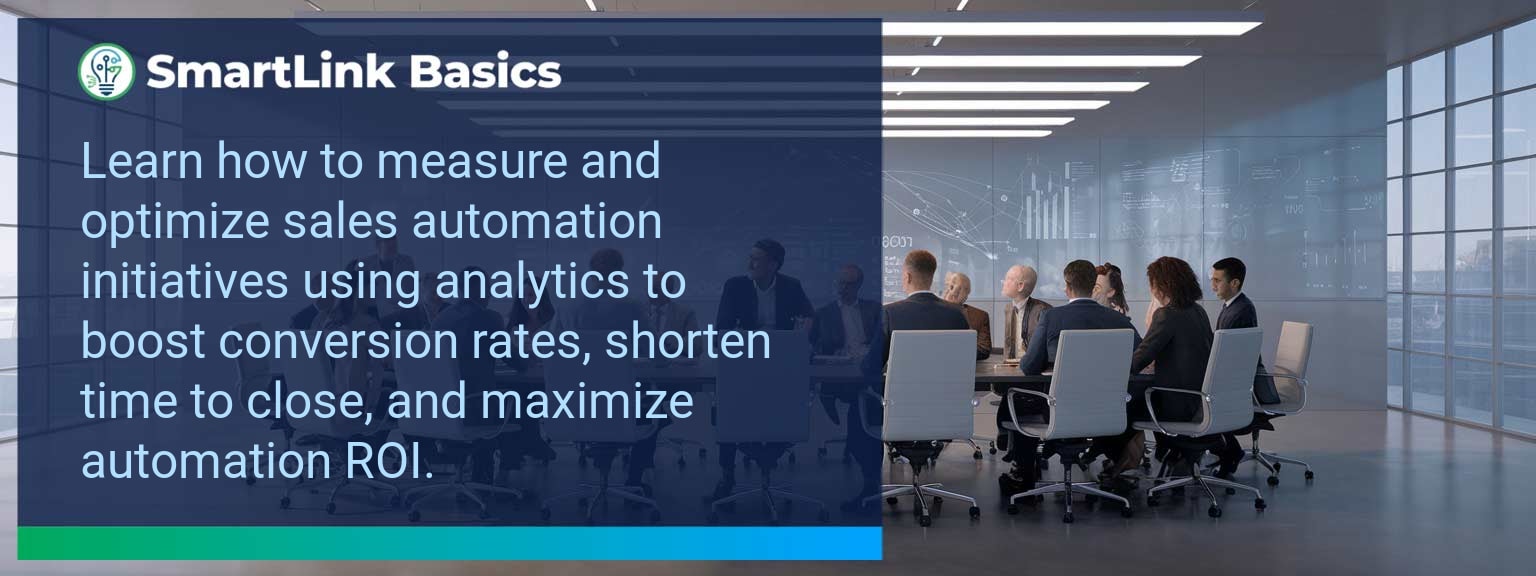Compensation shapes culture and performance. In sales leadership, the structure of a pay plan can accelerate growth or create behaviors that derail strategy. At SmartLink Basics, we believe sales leaders must treat compensation design as a strategic lever rather than a finance exercise. Well-structured sales compensation plans provide clarity, trust, and focus across teams. This article explores how sales leaders can design incentive models that align with strategic goals, prevent gaming, and reinforce behaviors that drive long-term revenue health. You’ll learn how to simplify plan design, connect activity to outcomes, and apply performance analytics to optimize results.
- Sales compensation plans communicate business priorities.
- Clarity and consistency build trust in incentive design.
- Balanced metrics drive both revenue and pipeline health.
- Safeguards prevent unintended gaming of sales incentives.
- Aligned plans create a sustainable competitive advantage.
Incentives As A Strategic Lever For Sales Compensation Plans
Pay structures define what behaviors sales reps chase. If compensation rewards only short-term wins, leaders risk damaging client relationships and future revenue streams. Effective sales compensation plans should reinforce both immediate performance targets and long-term strategic outcomes. By leveraging CRM optimization, workflow integration, and revenue operations tools, leaders can ensure incentives reflect not just financial outcomes but also the activities that feed sustainable growth.
A practical example: rewarding multi-product selling encourages reps to use sales automation to uncover opportunities across accounts rather than chasing one-off deals. This alignment elevates both performance and culture.
The Risk Of Misaligned Incentives
Even well-written strategies can collapse if compensation tells reps to chase the wrong outcomes. For example, over-rewarding bookings without quality gates often produces shallow pipeline and churn-prone deals. Sales automation and performance analytics can surface these issues early, but if left unchecked, growth looks strong in dashboards while renewal rates sink.
One SaaS company we advised saw 38% of new logos cancel within 90 days. The root cause: their incentive design placed outsized weight on volume instead of deal quality. A recalibration toward quality metrics stabilized retention and long-term revenue expansion.
Designing Compensation To Drive Behavior
Leaders must connect both the “what” and the “how” of performance. By blending lagging outcomes with leading activity metrics, sales compensation plans can drive balanced execution. For example, weighting new logo acquisition alongside early pipeline build pressures behavior in the right sequence—lead generation, qualification, then revenue closure.
To operationalize this, align incentive design with three components:
- Lagging metrics: closed revenue, account expansion.
- Leading metrics: demo-to-meeting conversion, qualified pipeline build.
- Guardrails: disqualify deals missing compliance or margin standards.
This alignment ensures sales teams optimize both growth and customer fit without overloading reps with complexity.
Outcomes Of Aligned Compensation Plans
When sales compensation plans mirror business strategy, three outcomes emerge: revenue consistency, cultural cohesion, and measurable growth. Clarity ensures reps trust leadership and can forecast their earnings. Cultural cohesion emerges as team members pull in the same direction, motivated by shared priorities. Most importantly, better alignment translates directly into reliable revenue streams that scale.
Revenue operations leaders can use performance analytics to validate effectiveness in real time, refining workflows and CRM optimization to sustain growth momentum.
| Category | Metric | Definition | Target |
|---|---|---|---|
| Leading | Pipeline Creation Rate | % growth in qualified opportunities created within quarter | 20%+ |
| Leading | Demo Conversion Rate | Meetings progressing to demo stage as percentage of total booked | 45%+ |
| Lagging | Revenue Attainment | % of quota achieved by rep or team | 100% |
| Lagging | Net Renewal Rate | Retention of account revenue over 12 months | 95%+ |
| Quality | Plan Clarity Score | % of reps reporting full understanding of their comp drivers | 90%+ |
| Quality | Compliance Rate | % of deals verified as meeting compliance or margin guidelines | 98%+ |
The Next Evolution In Incentive Design
The future of sales incentives lies in connected data ecosystems. Revenue operations leaders can apply digital transformation tools to simulate outcomes, automate payout accuracy, and optimize pay curves based on role. Intelligent workflows and AI-driven performance analytics will allow managers to adapt sales compensation plans in near real-time while keeping trust intact. This approach ensures that compensation continuously aligns with strategy without disruptive redesigns.
Get the 90-day plan, coaching rubric, and dashboard template to operationalize AI in your enablement program.
Compensation Design That Builds Both Growth And Trust
Sales incentives are more than payouts—they define your operating system. This post showed how aligned sales compensation plans can drive clarity, prevent gaming, and integrate seamlessly with technology-enabled performance analytics. The next step is to apply these insights across your revenue engine. Explore AI-driven sales enablement resources from SmartLink Basics to advance your team’s competitive edge.









